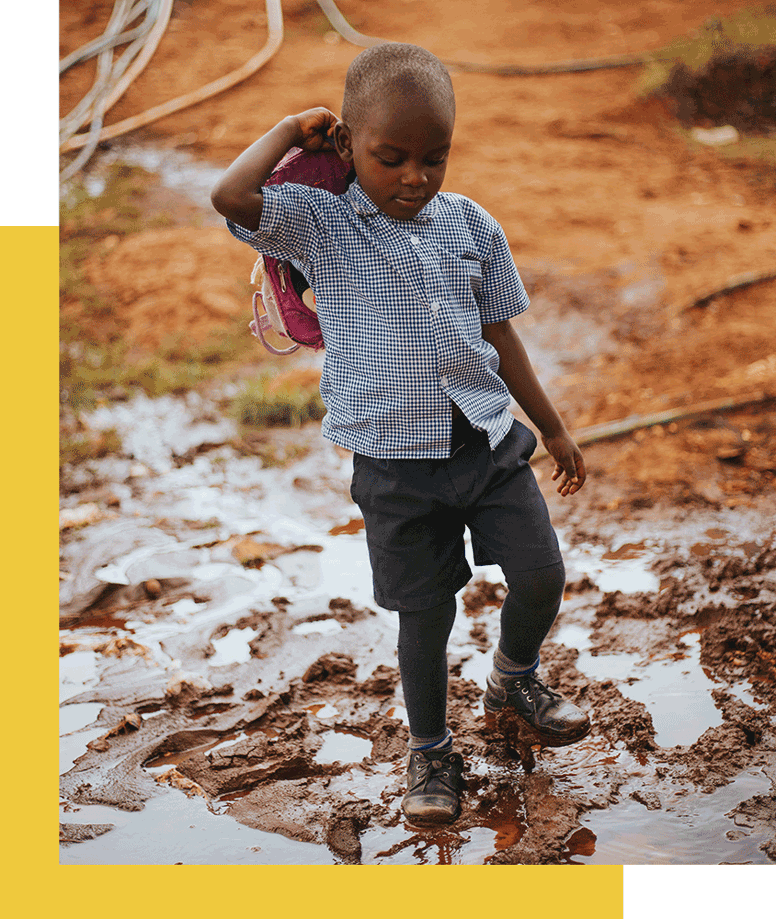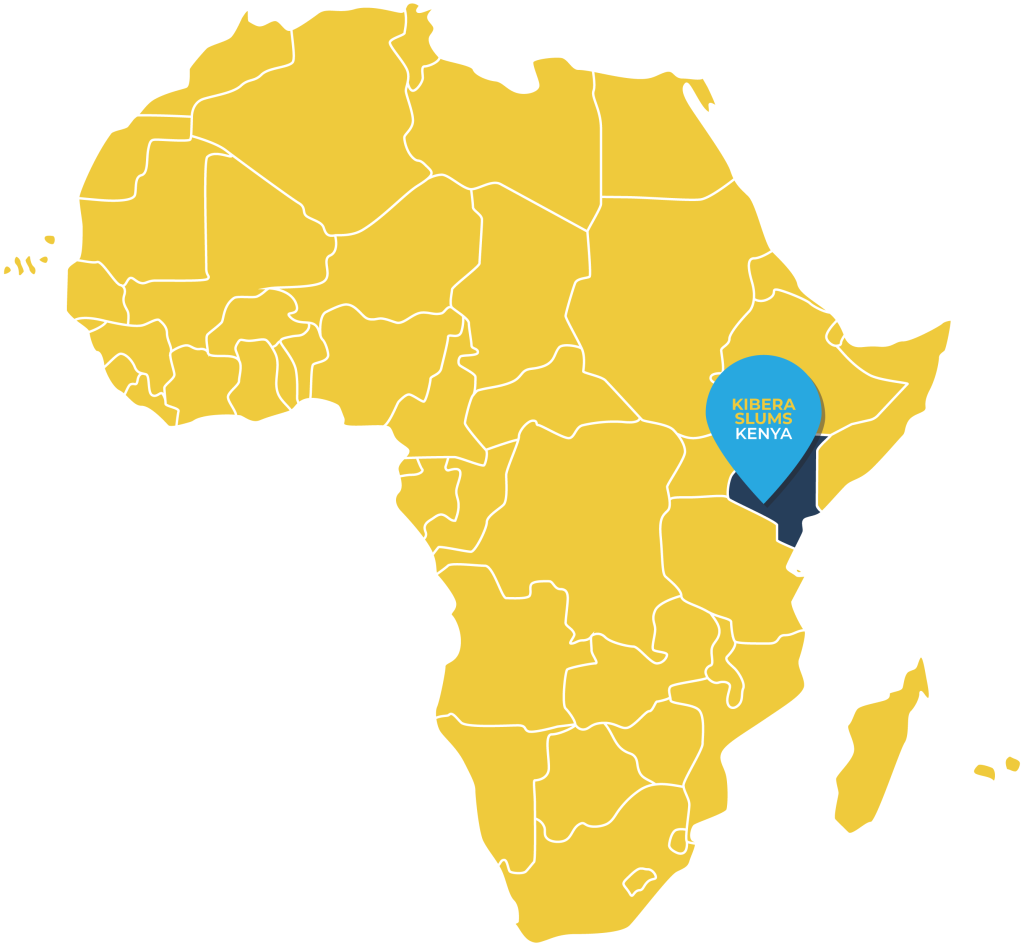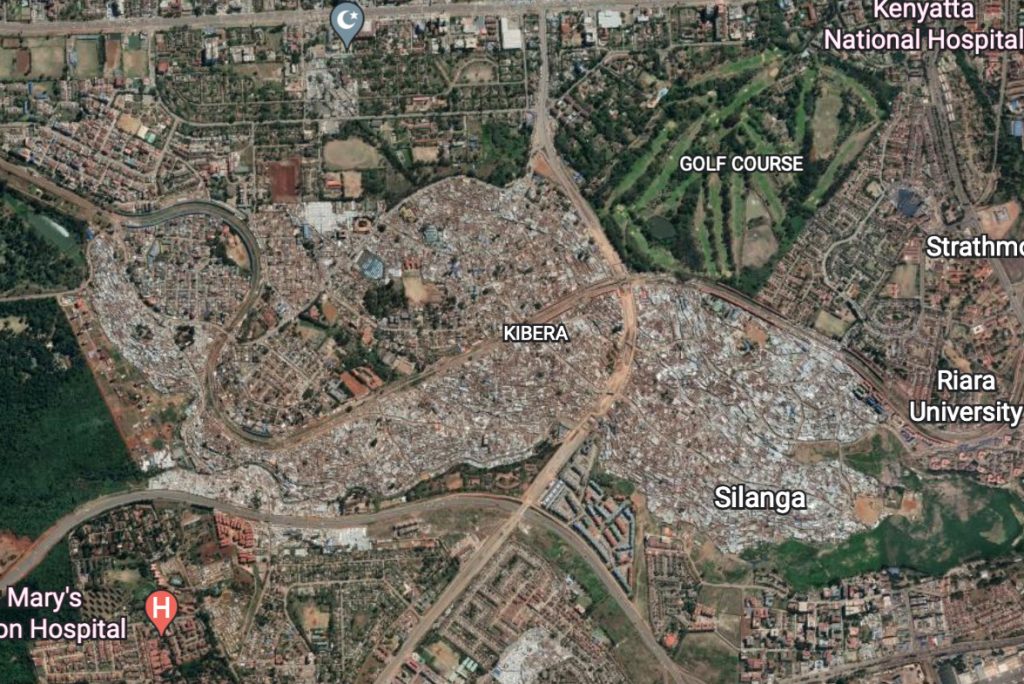Kibera Campaign
Kibera is a massive slum located in Kenya. What was once a temporary settlement for Nubians, the slum is now a “refugee camp” with over 408,000 permanent residents.
The majority of people living in Kibera don’t have access to clean, safe, drinking water.
Kibera is often described as “hiding in plain sight”, as only a short walk away from the slum is Nairobi – a bustling metropolitan area with plenty of modern amenities, conveniences, and comforts.
Families in Kibera earn a mere $26 a month, and they live in metal shacks no bigger than an average bathroom or kitchen pantry. A live electrical current flows through the metal sheeting of many of these shacks, as families will illegally tap into electrical lines from the neighboring Nairobi to at least have light in their homes.
Although hundreds-of-thousands of people call this place home, there are only 78 latrines throughout the whole slum. Because of this, common water sources in the area are contaminated with human waste.
Sewage flows freely down the alleys, through the thoroughfares, and over the thresholds of many of the homes in this slum.
If any place on earth needs radical intervention, it is Kibera.

Kibera Campaign
Kibera is a massive slum located in Kenya. What was once a temporary settlement for Nubians, the slum is now a “refugee camp” with over 408,000 permanent residents.
The majority of people living in Kibera don’t have access to clean, safe, drinking water.

Kibera is often described as “hiding in plain sight”, as only a short walk away from the slum is Nairobi – a bustling metropolitan area with plenty of modern amenities, conveniences, and comforts.
Families in Kibera earn a mere $26 a month, and they live in metal shacks no bigger than an average bathroom or kitchen pantry. A live electrical current flows through the metal sheeting of many of these shacks, as families will illegally tap into electrical lines from the neighboring Nairobi to at least have light in their homes.
Although hundreds-of-thousands of people call this place home, there are only 78 latrines throughout the whole slum. Because of this, common water sources in the area are contaminated with human waste.
Sewage flows freely down the alleys, through the thoroughfares, and over the thresholds of many of the homes in this slum.
If any place on earth needs radical intervention, it is Kibera.
Distribution Count
81,785
Follow Up Count
247,722
Salvation Count
122,542
Baptism Count
1,572


Our History in Kibera
In 2018, we ran a trial distribution of one-hundred filters and conducted four follow-up visitations over several months to determine the viability of our process on each family’s physical and spiritual health. We found by overwhelming consensus that Kibera was indeed a place where God was calling us to work.
In early 2019, we started a large scale distribution of 864 filters into the village of Kianda within Kibera. This first team of 14 missionaries and pastors were the foundation of what today is a team of over 180 servants to the Lord that comprise our team. These 864 filters allowed us to complete a time study on how long it takes to complete three follow-up visitations on each family which included discipleship for those that came to follow Jesus.
In 2020, we undertook the painstaking task of trying to understand how many people call Kibera “home” and how many homes were represented within the boundaries of the slum. We formed a team of the original 14 plus another 50 missionaries (most of which were recipients of the original 864 filters). Our 100% Kenyan team spent 4 and 1/2 months assessing the entire Kibera Slum, knocking on every door and placing a GPS pinpoint on every home. This allowed us to “know” (with great precision) how many homes are there with how many people living in them. This is something that no one on the face of the planet knew before this point. But it was required to draft a budget. Of course the global pandemic slowed our teams down a little, but we continued to grow and refine our processes in spite of it.
In 2021, we were blessed to meet Hope College and spearhead a study of the demographic and clean water data that we were collecting through our proprietary Mission Mapping system. We believe that when the peer-reviewed data is published it will show how effective the Sawyer PointOne hollow fiber membrane filter is at eliminating waterborne disease in one of the largest urban slums in Africa.


Our History in Kibera
In 2018, we ran a trial distribution of one-hundred filters and conducted four follow-up visitations over several months to determine the viability of our process on each family’s physical and spiritual health. We found by overwhelming consensus that Kibera was indeed a place where God was calling us to work.
In early 2019, we started a large scale distribution of 864 filters into the village of Kianda within Kibera. This first team of 14 missionaries and pastors were the foundation of what today is a team of over 180 servants to the Lord that comprise our team. These 864 filters allowed us to complete a time study on how long it takes to complete three follow-up visitations on each family which included discipleship for those that came to follow Jesus.
In 2020, we undertook the painstaking task of trying to understand how many people call Kibera “home” and how many homes were represented within the boundaries of the slum. We formed a team of the original 14 plus another 50 missionaries (most of which were recipients of the original 864 filters). Our 100% Kenyan team spent 4 and 1/2 months assessing the entire Kibera Slum, knocking on every door and placing a GPS pinpoint on every home. This allowed us to “know” (with great precision) how many homes are there with how many people living in them. This is something that no one on the face of the planet knew before this point. But it was required to draft a budget. Of course the global pandemic slowed our teams down a little, but we continued to grow and refine our processes in spite of it.
In 2021, we were blessed to meet Hope College and spearhead a study of the demographic and clean water data that we were collecting through our proprietary Mission Mapping system. We believe that when the peer-reviewed data is published it will show how effective the Sawyer PointOne hollow fiber membrane filter is at eliminating waterborne disease in one of the largest urban slums in Africa.
Where We’re At Now
As of 2024, our Kibera Campaign is fully funded and the physical labor of the project is 75% complete! Because of the immense generosity of our donors both big and small, we can now definitively predict that by the end of the year our local missionary team will have distributed water filters and shared the gospel of Jesus Christ to ALL 408,000 residents of this massive slum!
What started as a small ministry headquartered in a garage in East Texas, has grown so much in size and impact that we’re able to reach communities numbering in the hundreds-of-thousands with clean water and the gospel. None of this — and we really mean none of this — would’ve been possible without God and the above-and-beyond support from our amazing donors.
Progress Dashboard
This dashboard tracks the totality of the work in Kibera. We use our proprietary Mission Mapping platform to record all recipient interactions and data collected in the mission field.

